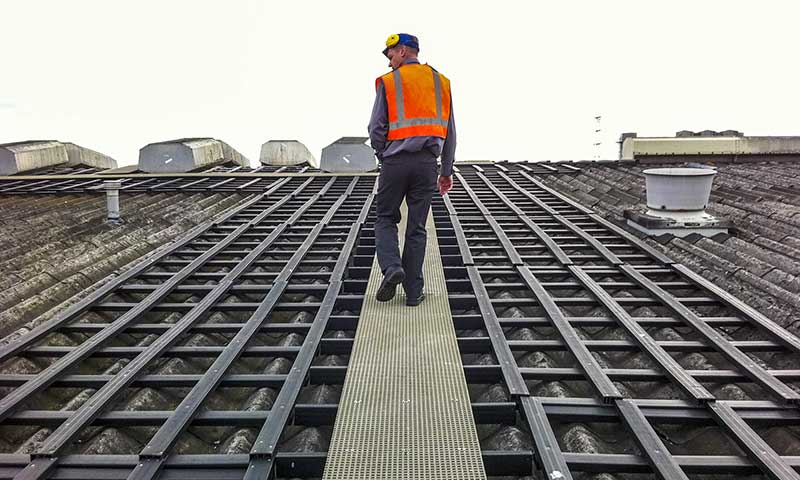Picture this: Workers fearlessly traversing rooftops, maintenance tasks accomplished with ease, and accidents reduced to a minimum. This vision of enhanced rooftop safety comes to life through the implementation of advanced roof walkway solutions. In the bustling Philippines, where construction and maintenance activities thrive, the need for secure and stable rooftop pathways has never been greater. In this blog, we’ll delve into the world of roof walkway solutions and explore their pivotal role in elevating safety standards across the archipelago.
Section 1: The Need for Roof Walkway Solutions:
In a country characterized by its tropical climate and sprawling urban landscapes, rooftop activities are a common sight. Unfortunately, so are accidents related to rooftop work. These accidents not only endanger workers but also lead to costly roof damage. The Philippines has witnessed its fair share of such incidents, making it imperative to address the need for reliable safety measures. Roof walkway solutions emerge as the answer to this pressing concern, bridging the gap between risk and security.
Section 2: Understanding Roof Walkway Solutions:
Roof walkway solutions, notably anti-slip walkway systems, lay the foundation for a safer working environment at heights. These systems provide a stable, slip-resistant surface, transforming rooftops into secure pathways. This not only safeguards workers but also preserves the structural integrity of the roof, preventing unnecessary damage caused by foot traffic. When ascending to great heights, a well-constructed pathway is akin to walking on air — light, secure, and devoid of danger.
Section 3: Features and Benefits of Anti-Slip Walkway Systems:
Imagine a surface that not only prevents surface damage but also offers portability and easy setup. This is precisely what anti-slip walkway systems provide. Their UV protection and fire retardancy properties make them resilient against environmental factors. The advanced design of these walkways ensures stability in all directions, even under wet or icy conditions. Designated paths define off-limits areas, regulating access and enhancing safety compliance. Workers can tread confidently, thanks to the superior traction offered by these systems. The adjustable hue options, from vibrant yellow for visibility to understated gray for discretion, cater to various requirements.
Section 4: Material Options for Roof Walkway Systems:
Two prominent material options, aluminum and fiber-glass, stand out in the realm of roof walkway solutions. Aluminum boats durability and resistance to corrosion, while remaining lightweight and easy to install. Its aesthetic appeal, thanks to the aluminum 6063 mill finishing, adds to its charm. On the other hand, fiber-glass shines as a non-corrosive alternative suitable for harsh environments. Despite its lightweight nature, fiber-glass exhibits remarkable strength. The absence of welding in installation expedites the process, and both materials can be equipped with guardrails upon request.
Section 5: Roof Walkway Solutions in the Philippines:
The Philippines, a country with a burgeoning construction sector and diverse industries, stands to benefit immensely from roof walkway solutions. From bustling cities to industrial complexes, the demand for secure rooftop access is universal. Whether in the construction of towering skyscrapers or the maintenance of expansive factory roofs, these solutions promise to enhance both safety and efficiency.
Section 6: Choosing the Right Roof Walkway Solution:
Selecting the optimal roof walkway solution requires consideration of multiple factors. Roof type, material, and installation process play pivotal roles. Tailored solutions, with varying lengths and anchoring methods, ensure compatibility with diverse roofing structures. By aligning the chosen system with specific needs, building owners and project managers can guarantee maximum safety benefits.
Takeaway
As rooftops transform into pathways of security rather than uncertainty, the value of roof walkway solutions becomes undeniable. The Philippines, with its dynamic landscape and thriving industries, is primed to embrace this safety revolution. By prioritizing safety through anti-slip walkway systems, workers can tread with confidence, and structures can be preserved for the future. The era of walking on air, both literally and metaphorically, is dawning, and the Philippines is at the forefront of this transformative change.

